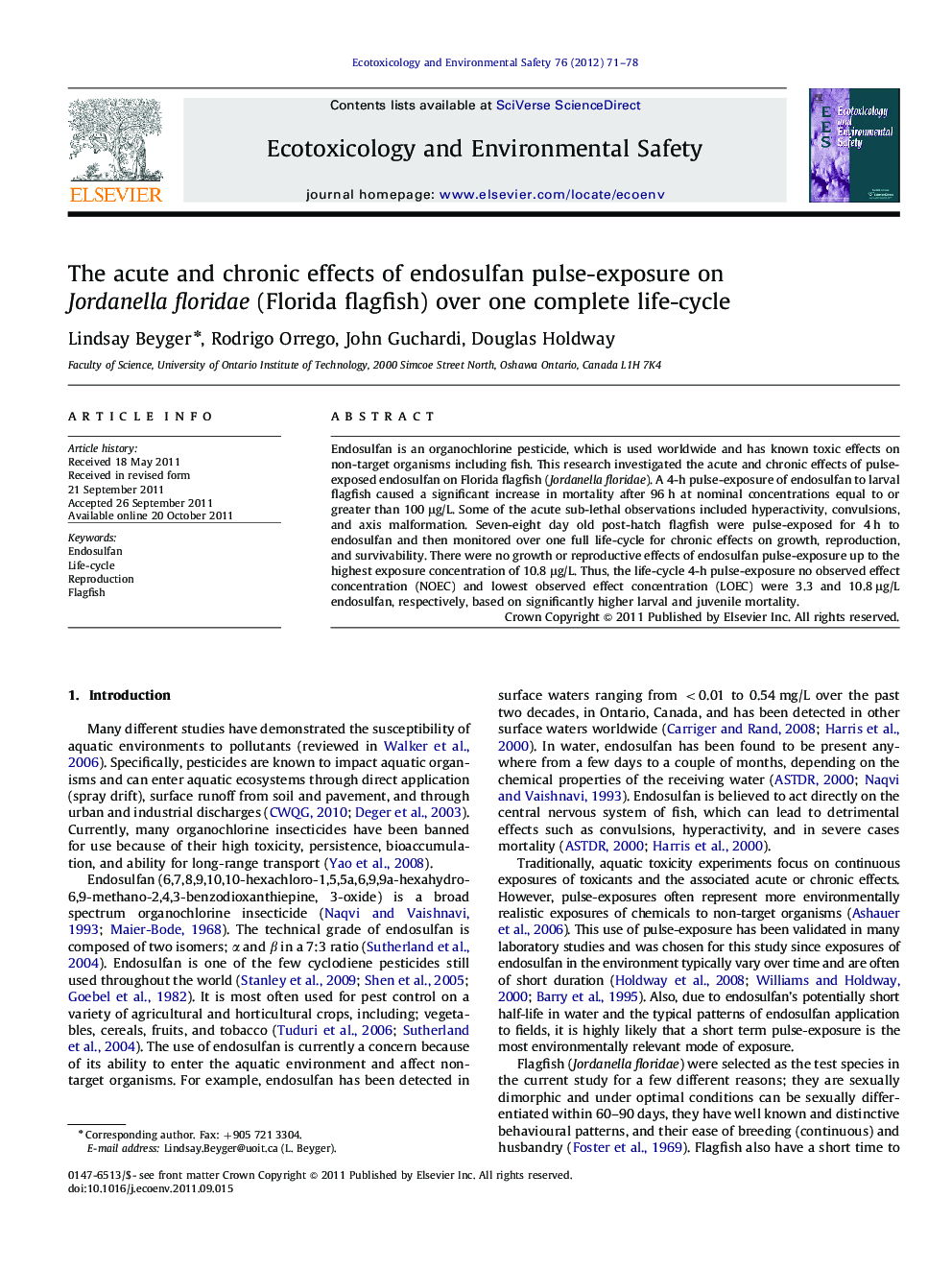| Article ID | Journal | Published Year | Pages | File Type |
|---|---|---|---|---|
| 4420941 | Ecotoxicology and Environmental Safety | 2012 | 8 Pages |
Endosulfan is an organochlorine pesticide, which is used worldwide and has known toxic effects on non-target organisms including fish. This research investigated the acute and chronic effects of pulse-exposed endosulfan on Florida flagfish (Jordanella floridae). A 4-h pulse-exposure of endosulfan to larval flagfish caused a significant increase in mortality after 96 h at nominal concentrations equal to or greater than 100 μg/L. Some of the acute sub-lethal observations included hyperactivity, convulsions, and axis malformation. Seven-eight day old post-hatch flagfish were pulse-exposed for 4 h to endosulfan and then monitored over one full life-cycle for chronic effects on growth, reproduction, and survivability. There were no growth or reproductive effects of endosulfan pulse-exposure up to the highest exposure concentration of 10.8 μg/L. Thus, the life-cycle 4-h pulse-exposure no observed effect concentration (NOEC) and lowest observed effect concentration (LOEC) were 3.3 and 10.8 μg/L endosulfan, respectively, based on significantly higher larval and juvenile mortality.
► Studied the effects of 4-h pulse-exposed endosulfan on American flagfish (Jordanella floridae). ► Significant mortality observed 96-h after pulse-exposure at concentrations ≥100 μg/L. ► Acute sub-lethal observations included hyperactivity, convulsions, and axis malformation. ► No growth or reproductive effects of endosulfan pulse-exposure. ► NOEC (3.3 g/L) and LOEC (10.8 μg/L), respectively, based on higher larval and juvenile mortality.
